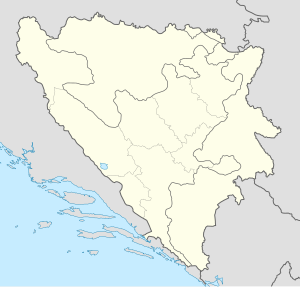Operation Sana
| Operation Sana | |||||||
|---|---|---|---|---|---|---|---|
| Part of the Bosnian War | |||||||
|
Objectives of Operation Sana ( |
|||||||
|
|||||||
| Belligerents | |||||||
|
Bosnia and Herzegovina |
|
||||||
| Commanders and leaders | |||||||
|
|
|
||||||
| Strength | |||||||
| 15,000 (initially) 25,000 (peak) |
8,000 (initially) 24,000 (peak) |
||||||
| Casualties and losses | |||||||
| 178 dead 588 wounded 41 captured |
900 dead ~1,000 wounded |
||||||
| Thousands of Serb civilians displaced | |||||||
Operation Sana (Bosnian: Operacija Sana) was a military offensive undertaken by the Army of the Republic of Bosnia and Herzegovina (Armija Republike Bosne i Hercegovine – ARBiH) in western Bosnia and Herzegovina during the Bosnian War. It was launched from the area of Bihać on 13 September 1995, against the Army of Republika Srpska (Vojska Republike Srpske – VRS), and involved advances towards Bosanski Petrovac, Sanski Most and Bosanska Krupa. At the same time, the Croatian Army (Hrvatska vojska – HV) and the Croatian Defence Council (Hrvatsko vijeće obrane – HVO) were engaging the VRS in Operation Maestral 2 further to the southeast. After an initial 70-kilometre (43 mi) advance, VRS reinforcements managed to stop the ARBiH short of Sanski Most and Novi Grad, and reversed some of the ARBiH's territorial gains in a counterattack. After a part of the ARBiH 5th Corps was threatened with defeat around the town of Ključ, the ARBiH requested assistance from the HV.
The HV and HVO launched Operation Southern Move in response, removing the VRS pressure from Ključ and allowing the 5th Corps, reinforced by the 7th Corps, to resume its advance and capture Sanski Most on 12 October, by which time a comprehensive ceasefire was to come into effect throughout the country. Combat continued for another eight days without significant changes to the frontlines. Fighting did not resume, and the war ended the following month following negotiation and acceptance of the Dayton Agreement.
...
Wikipedia

